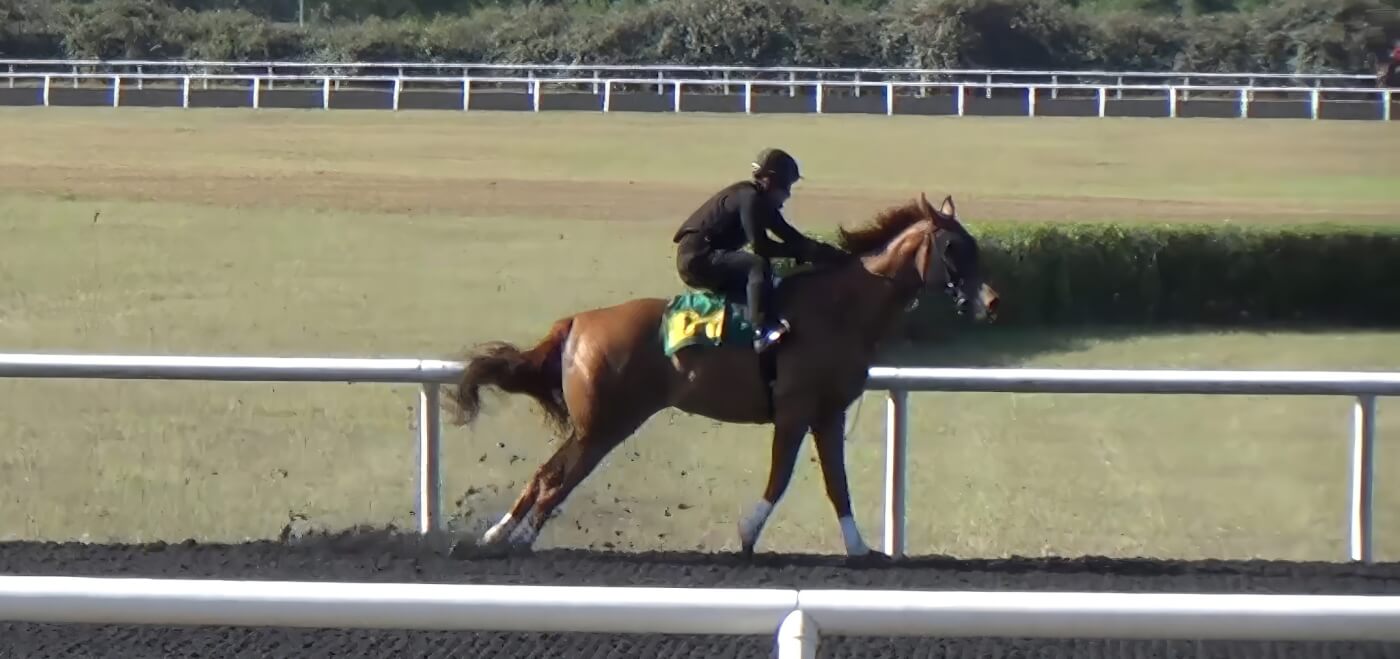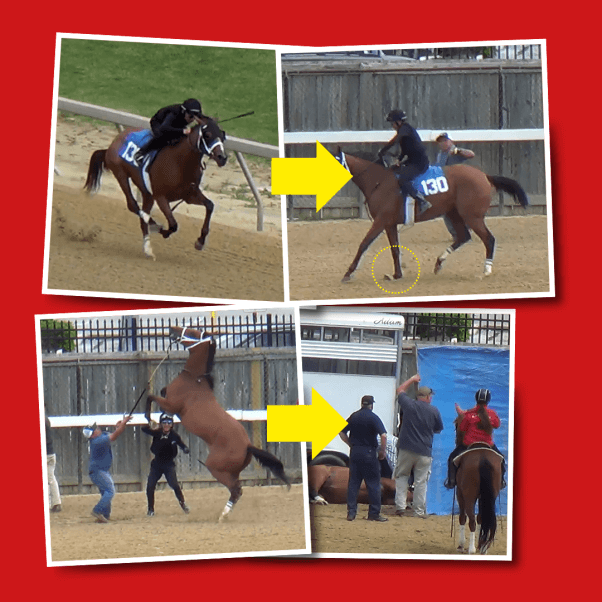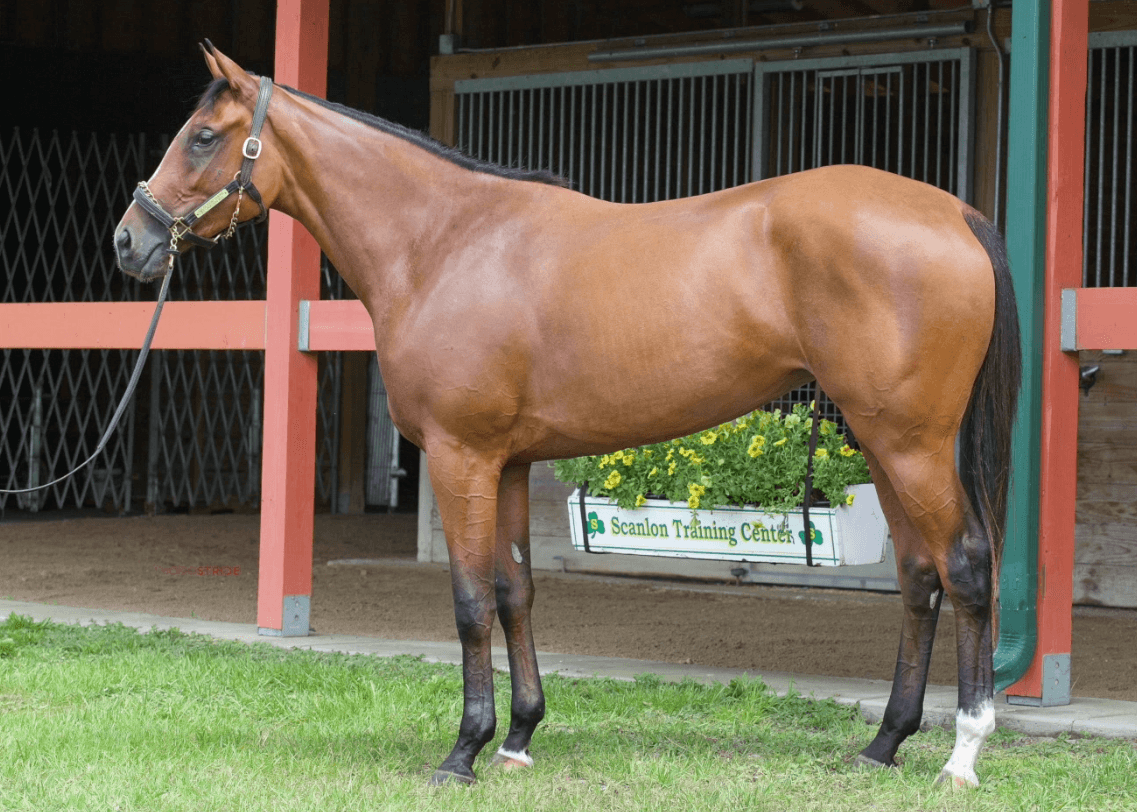Treacherous Speed Tests Are Killing Young Horses
Carnage for 2-Year-Olds at Thoroughbred Auction
The 2-year-old Thoroughbred filly hadn’t even been given a name yet, but her life was about to end. Known only as “Hip #130,” she strained every muscle, sprinting as fast as she could under the sting of a whip, until she sustained a catastrophic injury. Panicked and in severe pain, her leg dangling, Hip #130 reared up as trainers surrounded her. Her racing “career” – and her life – ended there on the track, with a lethal injection in the neck. PETA’s undercover investigator managed to capture it all on video.
Lives Cut Short for Reckless Sprints
Hip #130 was one of thousands of young Thoroughbreds forced to run at a breakneck (and break-leg) pace in what a former president of the New York Thoroughbred Breeders called “idiotic speed tests.” Known as “under tack shows” in the industry, these dangerous displays involve forcing fragile young horses – whose bones, tendons, and muscles aren’t yet fully developed – to run faster than they’ll ever run in any race, all to impress buyers at auctions and raise the purchase price.

PETA released video footage of yet another horse, “Hip #1041,” who was killed at a different under tack show after an excruciatingly painful injury left her dragging both rear legs. And an undercover video that PETA released previously shows horses forced to run so fast in speed tests that their bones broke and their aortas burst. One horse suffered a fatal cardiac event while being forced to sprint in extreme heat.
DEATH RACE
“Hip #130” was forced to run at top speed. After sustaining a catastrophic leg injury, she reared up in panic before being given a lethal injection. A blue screen was put up to block the carnage.

From Under Tack to Undertaker
Trainers admit that these hideous events don’t predict a horse’s future success and that they put the animals in grave danger. They’re held only to sway gullible buyers who salivate at the thought of acquiring a Kentucky Derby contender. Condemning the “stupidity” of forcing horses to run 1-furlong (1/8-mile) sprints in less than 10 seconds, billionaire racehorse owner Mike Repole said that the events should be banned.
For horses who advance to racing, the dangers are far from over. In the lead-up to last year’s Kentucky Derby alone, 12 horses died after suffering horrific breakdowns or because of unexplained causes. And even the “winners” eventually lose: When they can no longer outrun the competition, many are sent to slaughter in Canada or Mexico. Others are sold to the racing and breeding industry in South Korea, which eventually slaughters nearly every horse for meat. (Read the next page for more about what PETA has uncovered there.)

PETA’s Lifesaving Plan
Horses are not machines, and horse racing won’t survive being plagued by fatalities, drug scandals, and negative public opinion forever. But to reduce as much suffering as possible right now, PETA has presented instantly implementable plans to the industry, including persuading racing officials to launch the first-ever industry-supported retirement program to help prevent the slaughter of ex-racers, called the Thoroughbred Aftercare Alliance (TAA). We also proposed a first-of-its-kind technology that asks bettors to donate a portion of their winnings to the TAA, which is now in place at horse racing wagering terminals. The funds it has generated have helped prevent many horses from being sold at auction and sent to slaughter.
Now, PETA has submitted a creative plan to major auction companies and top breeders, trainers, owners, and other horse racing insiders. It proposes that under tack events be run at longer distances that correspond with horses’ training for actual races, rather than short sprints that are more likely to leave horses injured or dead, and moving trials from spring to the fall, when young horses are more physically developed.
Be Part of It!
You don’t have to go to these races to understand how cruel they are. All US residents, please help us end deadly speed trials.



